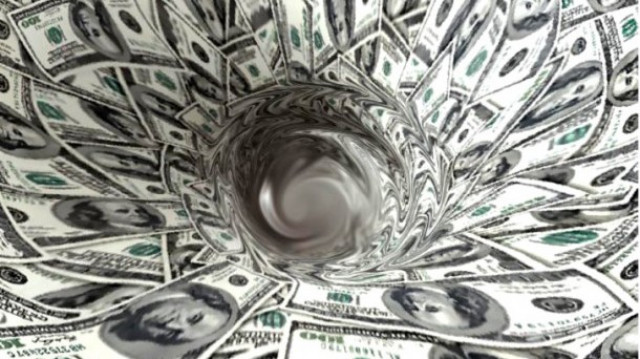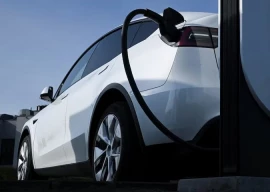
The country is passing through one of its worst ever economic crises and the omens are not good as the government is seeking to borrow more from the internal and external resources to pay off foreign debts which have surged to $59 billion.
And sources in the finance ministry accept the fact that the economy is caught in the vicious cycle of having to borrow externally to pay off existing foreign debt.
Fast increasing public debts clearly indicate that the financial managers should look at the option of falling back on the internal resources for debt-servicing. The country’s total foreign and domestic debt at the beginning of 2011 has touched the dangerous mark of almost Rs 11 trillion. The debt-to-GDP ratio has gone up to 74 per cent from 64 per cent in January 2010. The government is continuously borrowing heavily to meet its burgeoning budgetary deficit. According to the State Bank of Pakistan, domestic debt increased to Rs4.958 trillion by September 2010, from 4.018 trillion in September 2009.
The external debt of the government increased to Rs3.864 trillion in September 2010 from Rs3.656 trillion in September 2009. By September 2010, the foreign debt was $58.41 billion as against $55.62 billion in June 2010, showing an increase of $2.79 billion in three months.
And this trend was echoed by domestic debt growth as well. By the end of 2010, our domestic debt went up to Rs5.50 trillion as a result of the government’s insatiable borrowing quest. In September 2010, domestic debt and liabilities were of Rs 5.191 trillion, which registered an increase of Rs306 billion in just three months. During 2009 to 2010, domestic debt showed an alarming growth of Rs1.05 trillion. In December 2009, domestic debt/liabilities stood at Rs4.447 trillion rupees, which increased to Rs5.5 trillion by December 2010.
In the first quarter of 2010-11, debt servicing amounted to 1.2 billion US dollars as per State Bank of Pakistan figures. Since then, the size of debt servicing has increased by about 49 per cent as compared to the same period last year. Pakistan had to pay 5.641 billion US dollars as debt servicing in fiscal 2009-10, which accounts for more than 33 per cent of the country’s total foreign exchange reserves. The total foreign debt and liabilities of Pakistan reached 58.512 billion US dollars, up from 47 billion US dollars two years ago.
In 2008 the global financial crisis had an impact on Pakistan as well and foreign currency reserves almost evaporated as a consequence of the high oil import bill. During those times the country was once again required to borrow from the IMF. The IMF agreed to give us $11.3 billion but attached harsh conditions for reforming the economy. With international oil prices rising once again, and at a very rapid pace, posing a threat to forex reserves, the country’s ability to finance external debt is doubtful.
Pakistan’s balance of trade shortfall was over 11.4 billion US dollars last year, despite receiving 8.9 billion US dollars as remittances from overseas Pakistanis.
According to taxmen fewer than three million of Pakistan’s 175 million citizens pay any income taxes, and the country’s tax-to-GDP ratio is only nine per cent. This is one of the lowest tax-to-GDP ratios in the world. In comparison, Sri Lankans pay 15 per cent of their GDP in taxes, Indians pay 17 per cent, Turks pay 24 per cent, Americans pay 28 per cent and Swedes pay as much as 50 per cent. The main reason for this low ratio is tax evasion by the country’s elite. And unless the government can find a way to drastically increase this ratio, the only remaining option will be to borrow more and more resulting in a never-ending cycle.
Published in The Express Tribune, March 28th, 2011.

















COMMENTS
Comments are moderated and generally will be posted if they are on-topic and not abusive.
For more information, please see our Comments FAQ